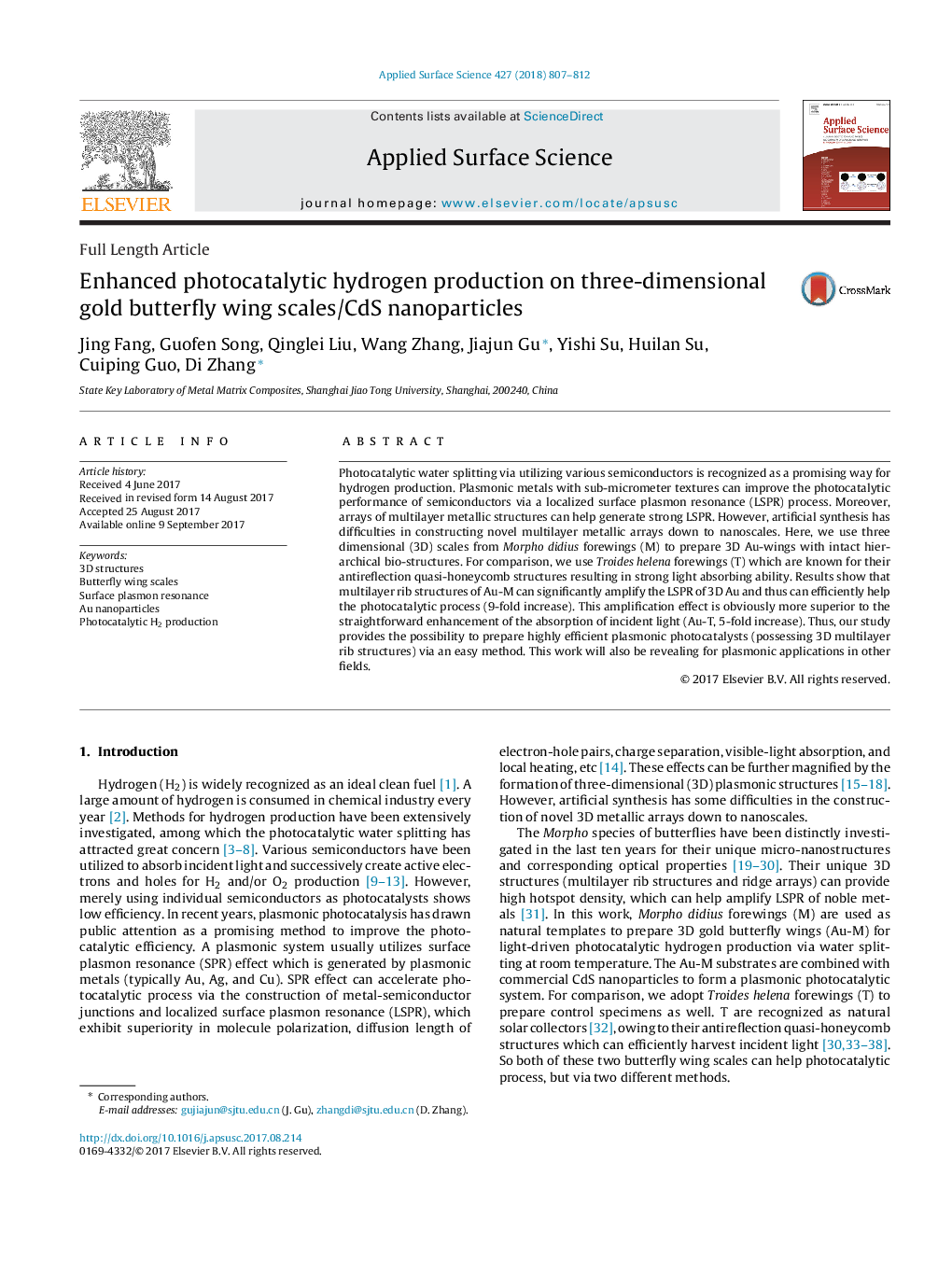| Article ID | Journal | Published Year | Pages | File Type |
|---|---|---|---|---|
| 5349292 | Applied Surface Science | 2018 | 6 Pages |
Abstract
Photocatalytic water splitting via utilizing various semiconductors is recognized as a promising way for hydrogen production. Plasmonic metals with sub-micrometer textures can improve the photocatalytic performance of semiconductors via a localized surface plasmon resonance (LSPR) process. Moreover, arrays of multilayer metallic structures can help generate strong LSPR. However, artificial synthesis has difficulties in constructing novel multilayer metallic arrays down to nanoscales. Here, we use three dimensional (3D) scales from Morpho didius forewings (M) to prepare 3D Au-wings with intact hierarchical bio-structures. For comparison, we use Troides helena forewings (T) which are known for their antireflection quasi-honeycomb structures resulting in strong light absorbing ability. Results show that multilayer rib structures of Au-M can significantly amplify the LSPR of 3D Au and thus can efficiently help the photocatalytic process (9-fold increase). This amplification effect is obviously more superior to the straightforward enhancement of the absorption of incident light (Au-T, 5-fold increase). Thus, our study provides the possibility to prepare highly efficient plasmonic photocatalysts (possessing 3D multilayer rib structures) via an easy method. This work will also be revealing for plasmonic applications in other fields.
Keywords
Related Topics
Physical Sciences and Engineering
Chemistry
Physical and Theoretical Chemistry
Authors
Jing Fang, Guofen Song, Qinglei Liu, Wang Zhang, Jiajun Gu, Yishi Su, Huilan Su, Cuiping Guo, Di Zhang,
